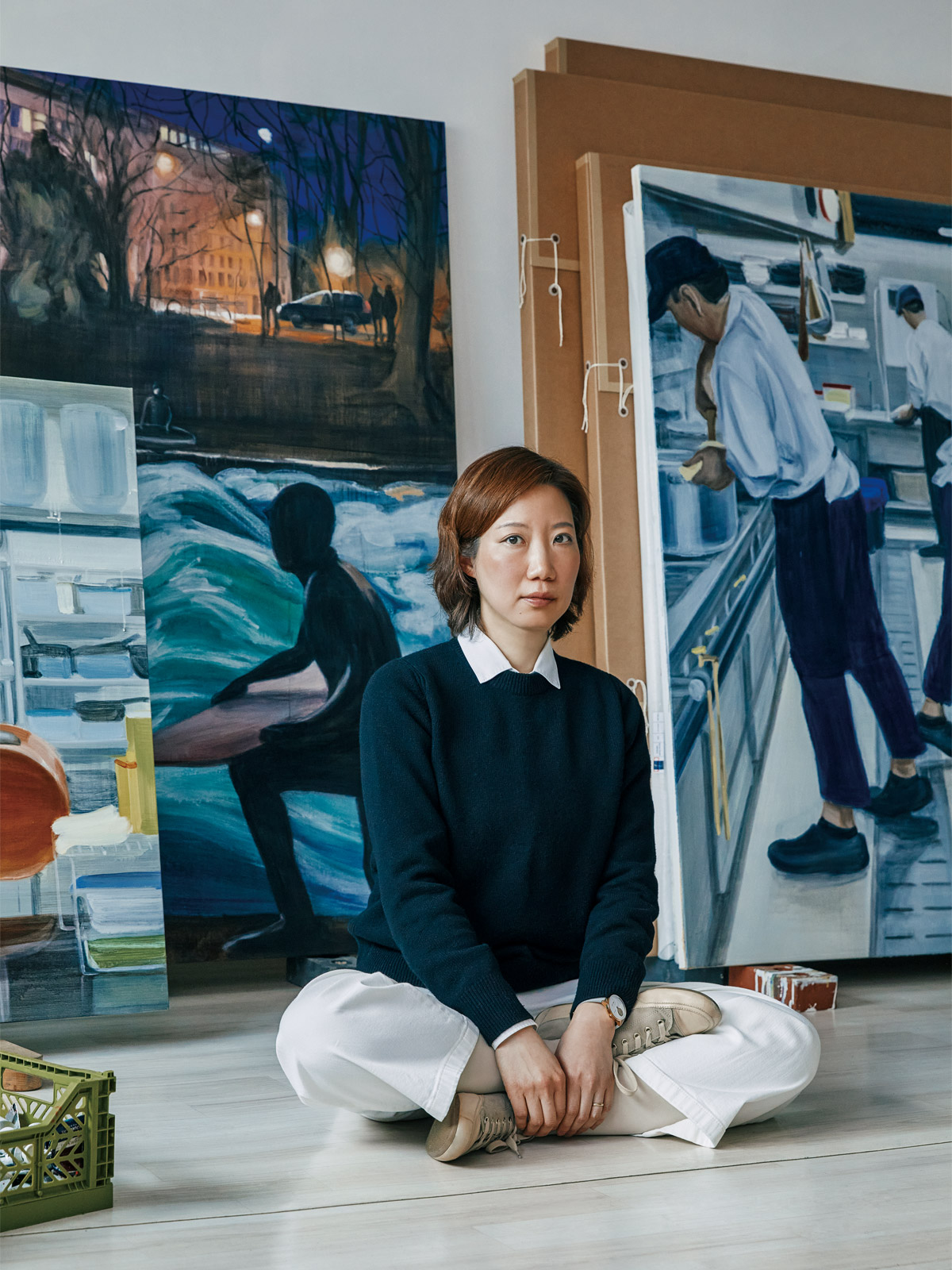
Haegue Yang, Sol LeWitt Upside Down – Steel Structure, Scaled Down 10, 2021, Aluminum venetian blinds, Times powder-coated aluminum and stainless steel hanging structure, steel wire rope, LED tubes, cable, 215 x 354 x 214 cm. Courtesy of the artist and Benesse Holdings, Inc. ©Kukje Gallery
The 13th Benesse Prize winner, Haegue Yang, is featured in a group exhibition at the Benesse House Museum of Art in Naoshima, Kagawa Prefecture. Celebrating the partnership between Benesse Holdings Inc. and the Singapore Art Museum, which began in 2016 and runs through 2022, the exhibition will feature works by Yang, as well as previous Benesse Prize winners Pannaphan Yodmanee, Zul Mahmod, Amanda Heng, and others, from June 15 through January 5 next year.
Since 2016, Benesse Holdings Inc. has been working with the Singapore Art Museum to recognize pioneering contemporary artists from Asia. Since its inception in 1995, the Benesse Prize has been awarded to artists participating in the Venice Biennale, but since the 11th edition eight years ago, the focus of the prize has been refocused to Asia, and the collaboration with the Singapore Art Museum has been to select winners from among the artists participating in the Singapore Biennale.
For this exhibition, Yang presents Sol LeWitt Upside Down – Steel Structure, Scaled Down 10 Times (2021), an installation composed of a grid of cold white tube lights and white blinds. Utilizing blinds, one of the artist’s signature materials, the installation is an iconic reinterpretation of American minimalist and contemporary art master Sol LeWitt’s (1928-2007) Modular Structures.

Haegue Yang, Sonic Eruption Upside Down – Slender, 2024, Sonic Eruption Upside Down – Bold, 2024, Powder coated stainless steel bells, stainless steel bells, stainless steel chains, split rings, carabiners, urethane coated stainless steel plates, transducers, amplifiers, real time data, 230 x 117 x 117 cm. Courtesy of the artist and Benesse Holdings, Inc. Commission by Benesse Holdings, Inc. Photo: Benesse Holdings, Inc. ©Kukje Gallery
Yang also unveils a new commissioned work in a two-person exhibition with Apichatpong Weerasethakul, “Ring of Fire – Solar Yang & Lunar Weerasethakul” (“Ring of Fire”), starting June 21 at Matabe in Naoshima. Located in the Honmura neighborhood of Naoshima, Matabe is a new exhibition space created by Hiroshima-based architect Hiroshi Sambuichi that reinterprets an existing traditional Japanese house.
The exhibition’s title, “Ring of Fire,” refers to the Pacific Ring of Fire, a region of the Pacific that is prone to volcanic activity and earthquakes. With a shared interest in the exploration of everyday elements that are clearly real but often out of our sight, the two artists conceived of an immersive environment that focuses on the senses of light, shadow, movement, and vibration.
Powered by seismic data, “Ring of Fire” operates at different times of day and night. Yang’s work is based on real-time data and operates throughout the day starting at 11 a.m., while Weerasethakul’s video installation is based on historical data accumulated over the past 124 years (1900-2024) and can only be viewed in the evening after sunset, according to a set screening time.
Meanwhile, Yang will have her first survey solo exhibition “Haegue Yang: Leap Year” in the UK at Hayward Gallery from October 9 to January 5 next year. The exhibition aims to present a holistic view of the artist’s multi-layered and wide-ranging practice, spanning her early work from the early 2000s to her most recent works. Featuring new blind works and a selection of major bodies of work, including Light Sculptures, Sonic Sculptures, The Intermediates, Dress Vehicles, and Mesmerizing Mesh, the exhibition will travel to Europe in 2025.

























